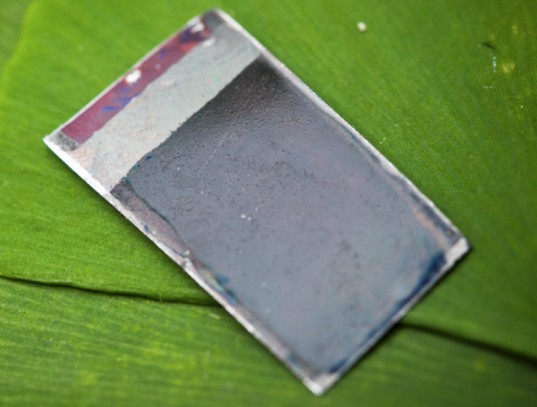MIT researchers just officially unveiled a device that uses sunlight to split water into hydrogen and oxygen. The device builds upon a breakthrough hydrogen producing technology developed in 2008, and they are calling it an “artificial leaf” because of it capacity to create chemical fuels directly from sunlight. The cell is also made from common materials like silicon, cobalt and nickel, which means that the “leaf” could potentially be mass-produced. If the technology proves itself it could create hydrogen fuel directly from the sun, which could be used for transportation, heating, and running fuel cells for electricity. Check out a video of the leaf’s bubbling action by reading on.

The cell is a silicon wafer (similar to current solar electric cells) which is coated on each side with separate catalysts for hydrogen and oxygen. The team developed a cobalt catalyst three years ago which releases oxygen when activated by sunlight. They then added a nickel-molybdenum-zinc alloy layer on the other side of the silicon wafer, which separates hydrogen from the H2O. Drop the wafer into water and expose to sunlight and voila — water splits into gasses, which then bubble to the surface. In order to be useful the gasses will need to be separated and the hydrogen captured and stored – a technical hurdle for energy production.
The technology offers a shortcut to producing hydrogen for energy. The promise of a clean energy economy based on hydrogen has had one big drawback – traditional methods require a lot of energy to split H2o, so the power produced in the end is simply a transfer of energy rather than a new form. The benefits of using photons to create hydrogen are enormous. A large pond could make the gas, which could then be stored and run through a fuel cell to produce electricity and heat on demand. The researchers envision the technology integrated into a tiny, algae-like material that, when immersed in water under the sun, could produce all the energy needed by a typical household on-site.
Source: inhabitat
 Follow
Follow